Incredible Carvings
It’s been a very long time since experts have tried to understand these amazing carvings. For years and years, researchers have come up with different explanations answering all sorts of questions, from why they look the way they do to how they were transported.

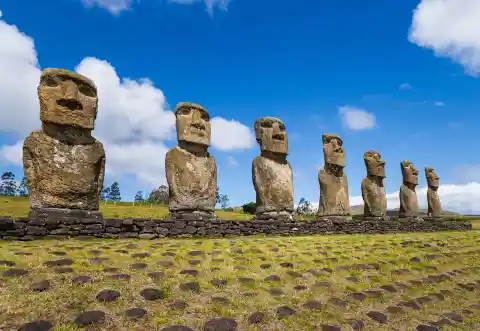
Some of the theories they’ve come up with are quite credible, but others still don’t really make that much sense. However, the mystery of why the people in Easter Island decided to place the statues where they are standing to this day has been quite pressing until not so long ago.
Finally, Progress
It wasn’t until a team of six researchers from the educational community in the USA came together and decided to put an end to this pressing matter. The experts carefully analyzed the area surrounding the statues and concluded that there definitely was a reasoning behind the selected site for the carvings.

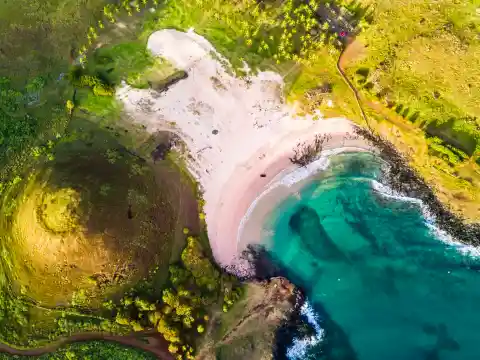
The long-lost civilization didn’t randomly place the Easter Statues where they thought would look nice. But to understand the researchers’ discovery, we must go back to the history of the monoliths to understand how they came to solve the mystery.
The Island's Geography
Easter Island is on the Pacific Ocean, and it is quite far from any continental landmass. The closest one is Chile, which sits 2,182 miles away. The Island is on the south corner of the Polynesian Triangle, and in case you were wondering, only 5000 people live on it.
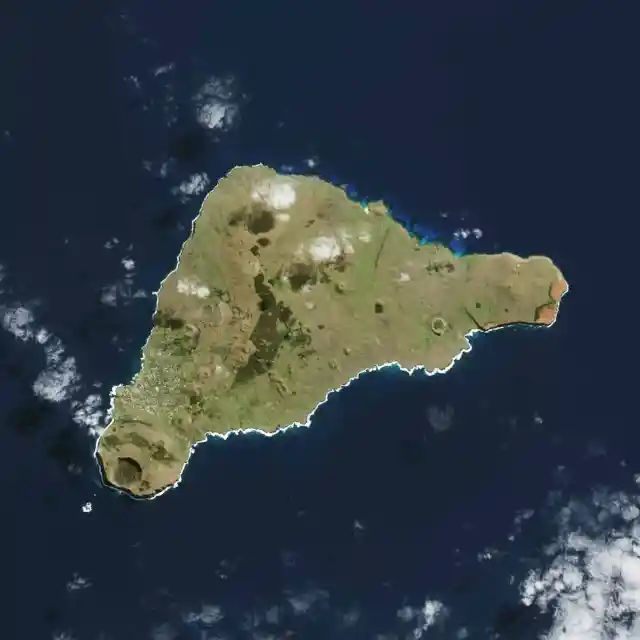
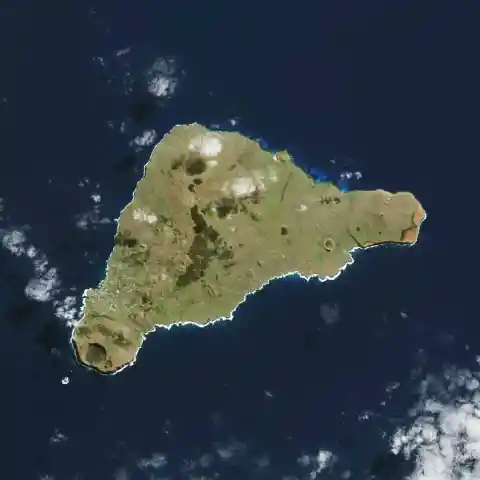
Furthermore, three extinct volcanoes made up of porous rock and joined by their own lava flows give the island its unique triangular shape, which can be appreciated in satellite pictures such as the one shown above.
Some History
Easter Island was initially discovered back in 1200 AD by the Marae Renga people, nowadays known as the Rapa Nui. Throughout the next century, these people constituted what is now the easternmost settlement of all the Polynesian region.
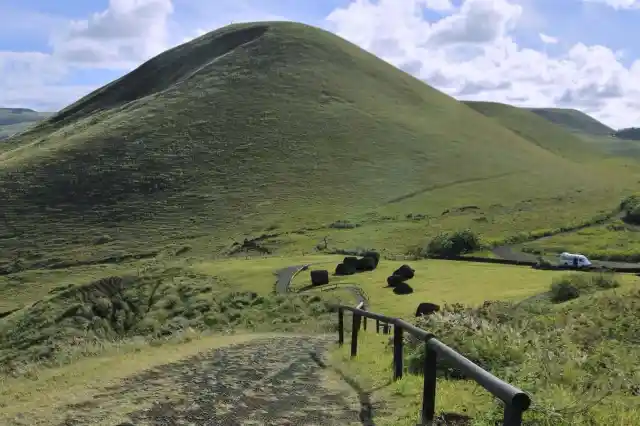

Historians believe that the people that settled there first developed a very rich and unique culture. Proof of such culture is the Easter Island statues themselves; they are a clear sign of how sophisticated the Marae Renga was.
Rodents
While we know that the community that settled on Easter Island was very prosperous, there’s still much to uncover in terms of the significance of the statues that they built. The mysteries’ answers vanished along with the inhabitants themselves.
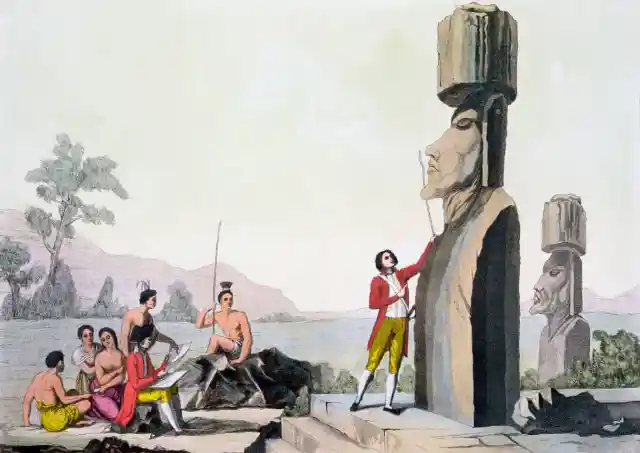
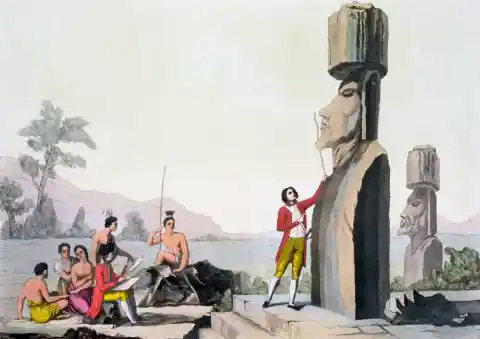
Many of the original people from the Easter Islands passed away due to harsh changes that occurred on their land. In fact, one of these shifts was triggered by the introduction of the Polynesian rat. We’re talking about the third most widespread rat after the black and the brown rat, and while it’s very small, it is quite a harmful species.
Changes In The Ecosystem
You probably are wondering why it matters that the Polynesian rat was introduced; after all, rats are everywhere! Well, the issue was that along with the Polynesian rat, many other rodents came up. Together, they caused significant damage to the vegetation of the land, much of which was irreversible.
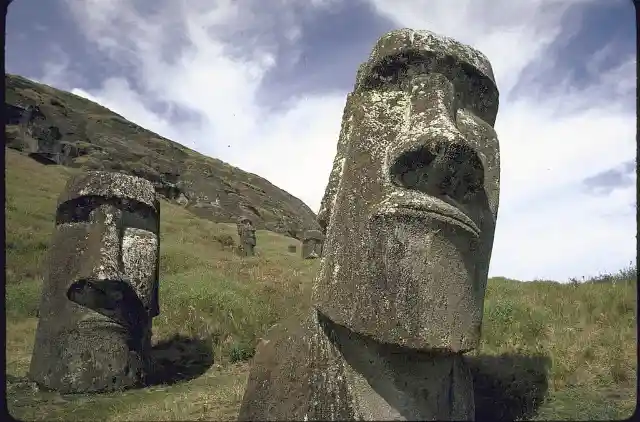
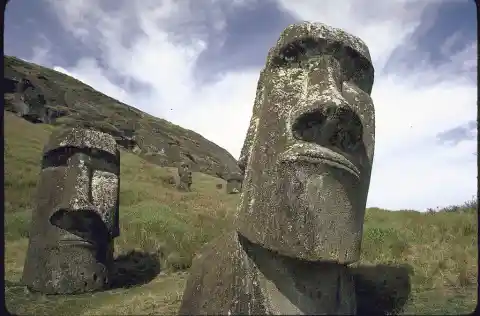
What happened on Easter Island was that the rodents would chew and destroy the seeds that were meant for cultivation. Without these seeds that were meant to thrive, the Easter Island people found themselves in a dire situation. As the land’s ecosystem changed, the Rapa Nui population fell from 15,000 to 3,000.
Europeans
While the Rapa Nui population was diminishing, the Europeans arrived in 1722 to find an indigenous population that was quite small in numbers. However, the situation took a darker turn for the Rapa Nui people because when the Europeans arrived, they brought with them diseases that killed even more of the original settlers.
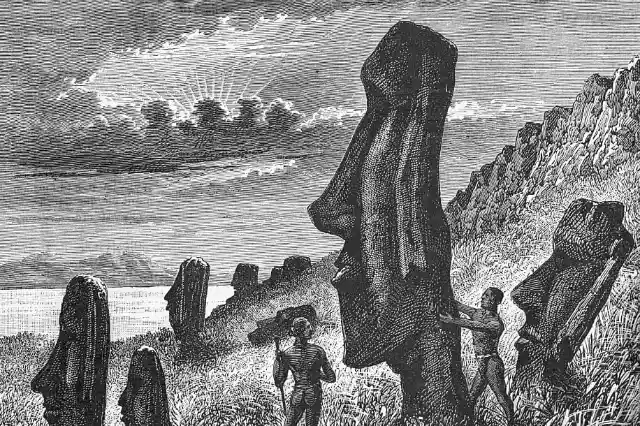
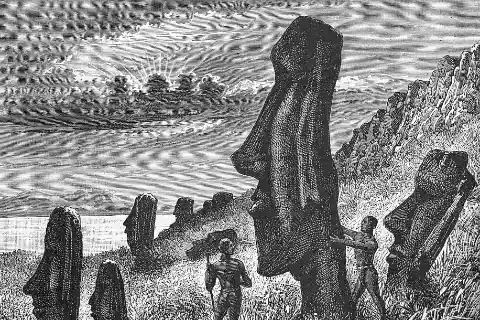
On top of this, Peruvian slavers came along in the 1860s, and they also reduced the number of people that were part of the Rapa Nui community. Given such adversity that the aboriginal Polynesians had to face, it comes as no surprise that most of them decided to move out of their native land.
Rapa Nui Persevered
But while their population became smaller, that didn’t stop the Easter Island people from keeping up with their traditions. Somewhere between 1250 AD and the 16th century, the Rapa Nui people built their famous moai, also known as the Easter Island Statues.
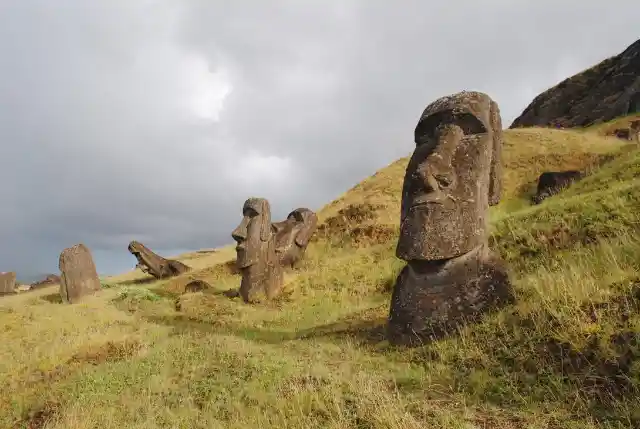
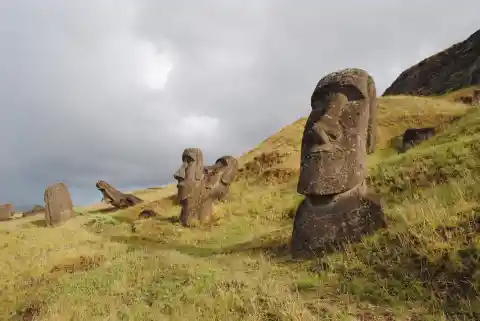
The Moai resemble real-life people but still look somewhat different. For instance, each statue’s head makes up about half of the whole structure. Experts say that whoever made these were distinguished carvers. However, how they earned the right to perform the carvings remains unclear. The theory is that it had something to do with social hierarchy.
Size And Weight
We all know that the Easter Island Statues are huge, but you probably didn’t know just how big they are. The tallest one, known as Paro, is about 33 feet tall and weighs about 90 tons. In fact, if you take into account the uncompleted ones, experts say that the largest one would have been 69 feet tall and would have weighed 165 tons.

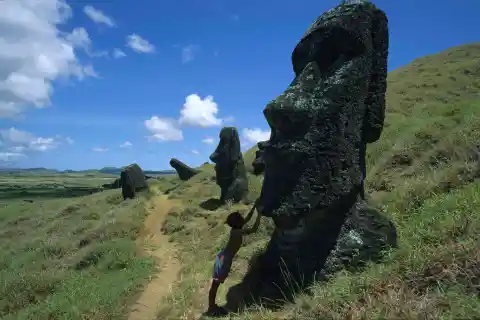
Researchers thus wonder how exactly these enormous monoliths were carried around Easter Island, mainly because at one point, they thought the Island used to be treeless. However, after further analysis, they came to the conclusion that trees were indeed present until 1200 AD.
Transportation
Knowing that there were trees, experts theorized that this is what they used to move the huge statues around. If this theory were true, this means that nearly 150 people would have been needed to simply transport one statue. Other investigators suggest that the Rapa Nui used a combination of ropes and wood mechanism much like a sled instead.

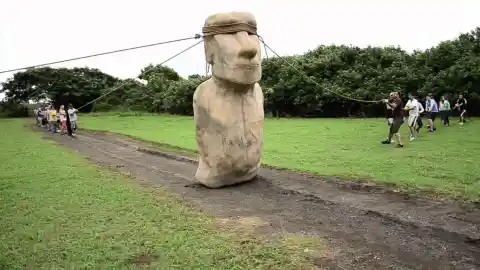
However, other investigations conclude that the Rapa Nui most probably used ropes to wrap around the statues on the opposite sides. Afterward, they likely pulled these ropes to rock the moai so that the statues would somewhat stand and “walk” to their site.
The Walk
You probably imagine that this walk was no easy feat, and investigators agree. They assume that to coordinate the walk, the islanders probably chanted rhythmically so that the people pulling on the ropes would pull and walk in perfect harmony.
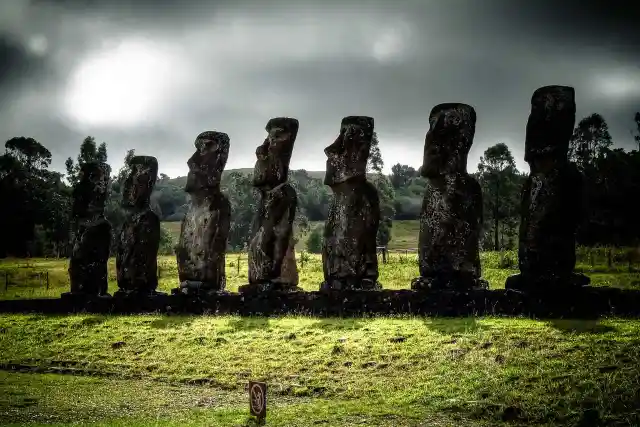
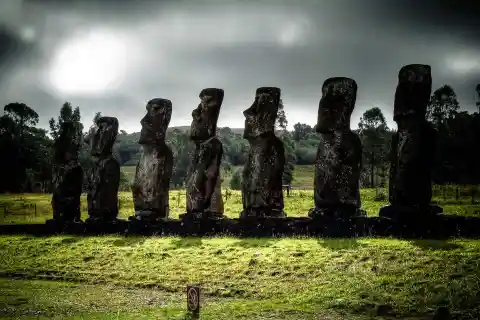
This theory actually ties really well with the oral history of the Rapa Nui. Legend has it that the islanders had the divine power to make the huge monoliths walk to their own assigned spot, sort if in a magical way. There are stories about how the king had the power to do this, while others say that it was a lady that had such power.
Proportion And Meaning
While the transportation method has had some successful hypotheses, there is a lot of mystery surrounding why the statues are proportioned the way they are. The carvings are very distinct; the noses are huge, the chins are highly defined, the ears are rectangular, and the eyes are represented through slits.
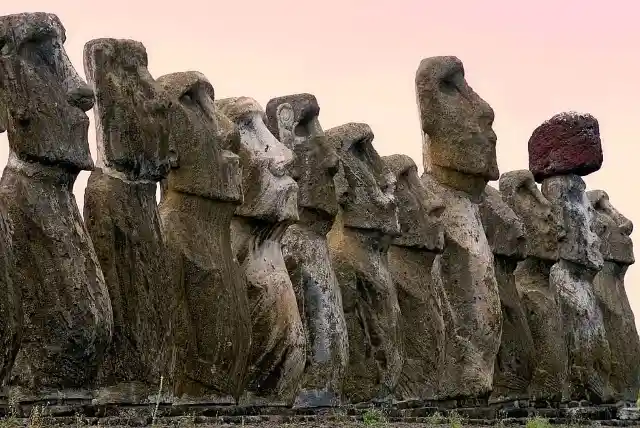
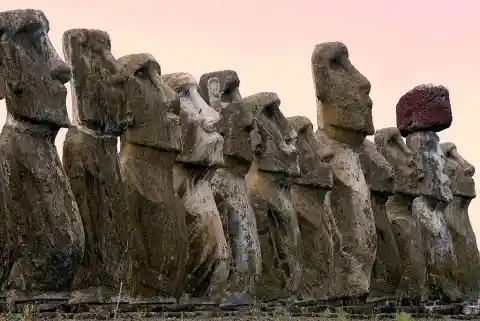
Several of the statues face towards the area where the Rapa Nui lived, which makes archeologists think that the statues were symbols of prominent figures within the Rapa Nui community. Some experts think that the statues were standardized, yet that each one represents a unique individual.
The Moai As Mediators
Another famous theory regarding the meaning of the moai is that they were meant to be mediators between the sky and the earth. In essence, they bridged the gap between people and the gods. This theory would explain the sheer size of the Easter Island statues.

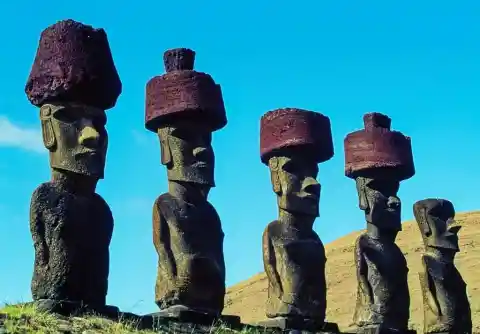
Furthermore, this would make sense if we took the oral history of the Rapa Nui into account. A man who claimed to be related to the first king said that the statues looking inwards were, in fact, looking after the people. As for the moai looking outwards, they did so to honor the sea, which was where the tribe’s ancestors came from.
One Mystery Down
Back in 2009, British researchers found the answer to the red stone headgear mystery. For so long, people had wondered why some statues appeared to be wearing this, and the researchers had to go way back into the time when the Rapa Nui built the statues.
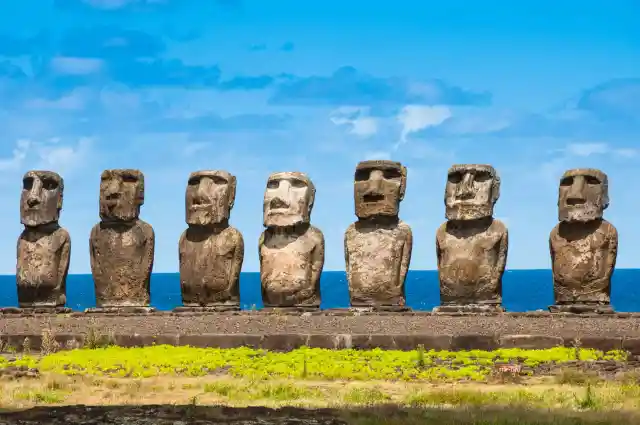

The researchers found out that the red stones came from a special quarry. This ancient quarry meant a lot to the Rapa Nui, and they concluded that it had both sacred as well as industrial significance for the Polynesians. In essence, the Rapa Nui saw their lands as a living organism, and after carving the rock, the spirits would be held within the carved statues.
Power And Hierarchy
According to research, the Rapa Nui placed the red sacred stone on their statues in order to represent the social standing of the figure back when they walked the land. These stones were representative of a braid that the chiefs of the tribe would wear to show their power.
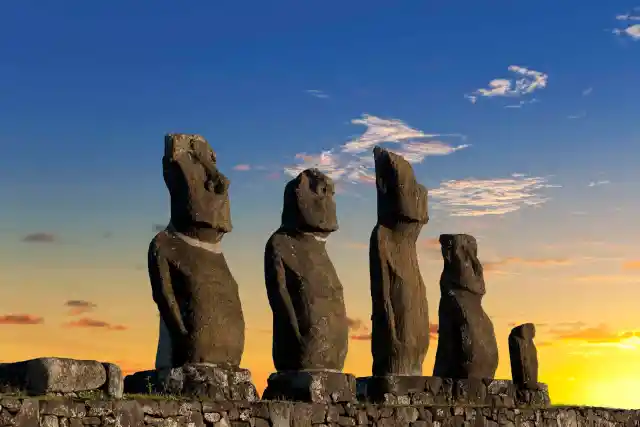
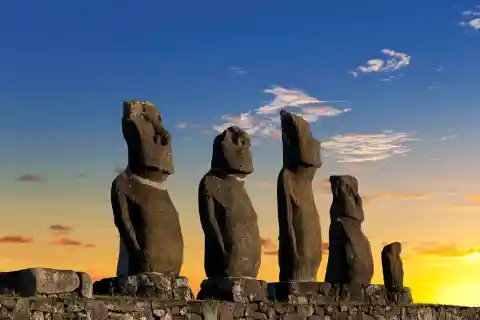
This research led them to believe that the society that built the moai was very competitive. However, once they had this theory down, they still needed to find out about the mystery surrounding the positioning of the statues. While some people said it was meant to have the statues watch over the land, researchers were not convinced yet.
Ahu
Researchers were curious about the ahu. The Ahu are the platforms on which many of the statues are standing on. Researchers thought these probably had some sort of meaning. An archeological team came together and analyzed 93 ahu.
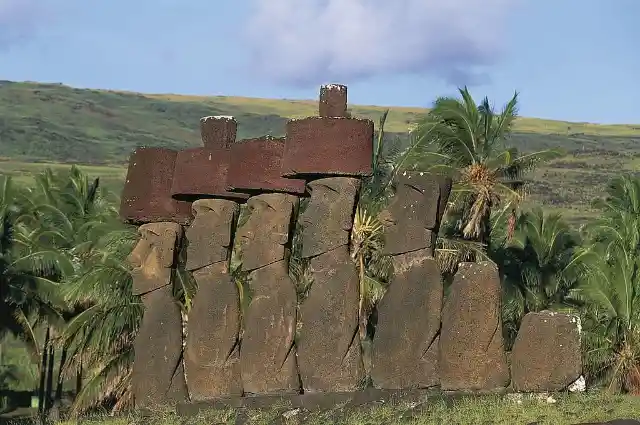
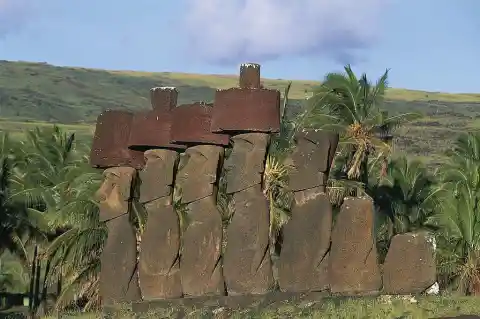
The researchers then looked at each ahu and surveyed its surrounding areas. Specifically, the team looked to find any sort of nearby resources that the statues might highlight. They searched for evidence of the sweet potato, for instance, as well as potential fishing sites and other amenities.
Disappointment
This research wasn’t unexpected because it had been a while since scientists had speculated that there was some sort of link and meaning between ahu and moai. However, after extensive research, the experts had to give up on this idea.

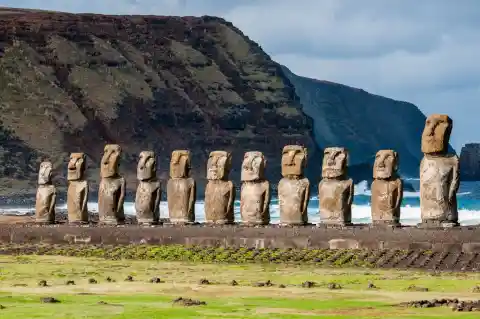
Even after coming up with a list of ahu and the resources surrounding them, experts failed to find any connection between most of them. Since the statues were not close to any gardens, researchers concluded that the figures probably were not there to protect a special part of the landscape.
Ahu And Water
However, while they didn’t find any gardens nearby, researchers did find something worth analyzing. There was something about ahu and water. The statues seemed to denote areas in the landscape where the Rapa Nui people found freshwater.
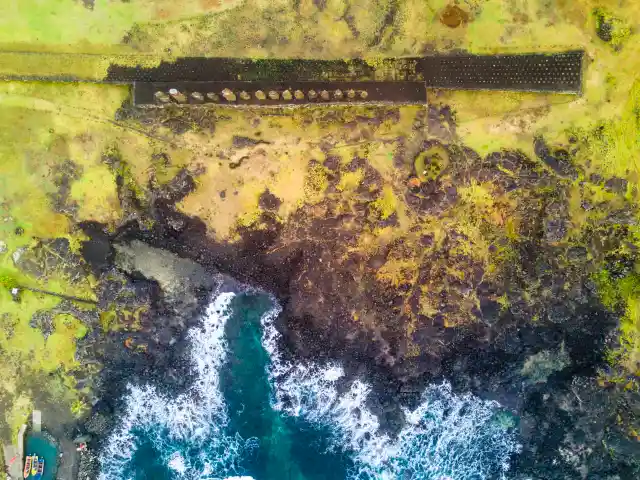
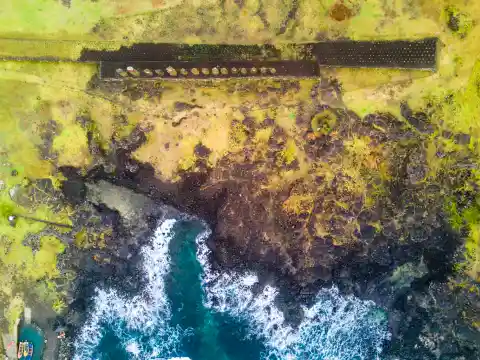
This would have been essential for people that didn’t have freshwater resources nearby. Easter Island has no springs with drinkable water, which is why the research team concluded that people back then had to drink groundwater. The water would flow from aquifers into the ocean.
Groundwater Discharge
Anthropologists explain that freshwater comes out between the coast and the ocean in the form of a spring. In fact, researchers saw horses drinking in the ocean, which meant they knew where to find freshwater despite the lack of streams or springs. Thus, the team concluded that the moais’ positioning was related to the area where the groundwater emerged.
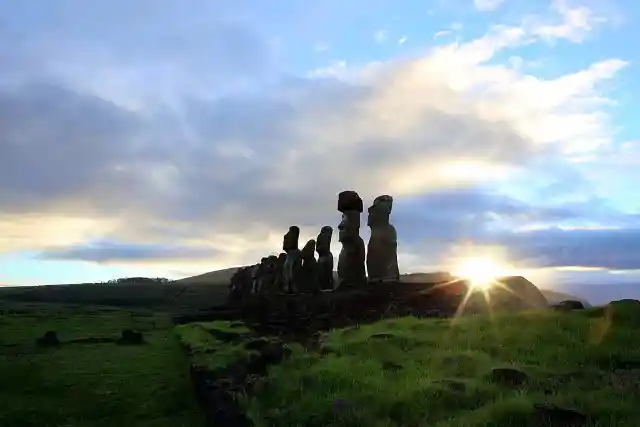

However, when it comes to inland, their positioning had more to do with areas where they could find natural sources of drinkable water. As an example, some of these statues were near caves that held fresh water inside. Thus, it now seems quite clear that the Easter Island statues’ positioning had a direct relation with sources of fresh water.
Eureka
The building of these famous monoliths by the Rapa Nui was culturally significant as well as crucial for their survival. The huge monuments are a reflection of the communal sharing of freshwater as well as food, family and their social lives.
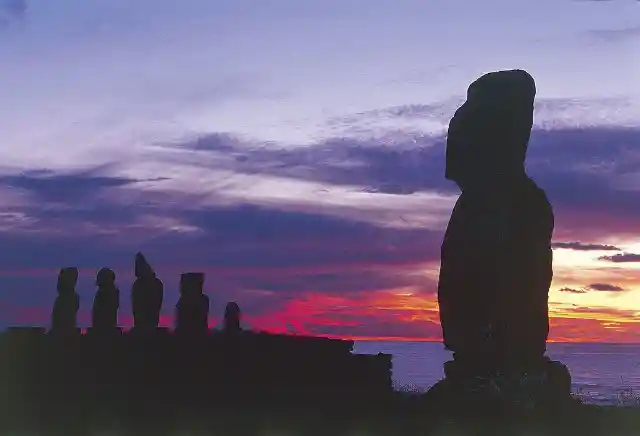

In conclusion, the moai’s positioning was further proof of the communal behavior that was predominant within the Rapa Nui people. Sharing was one of their biggest traits despite the fact that the island was quite limited in resources. The Rapa Nuis was fond of sharing knowledge and resources for about 500 years until that was disrupted by the Europeans.